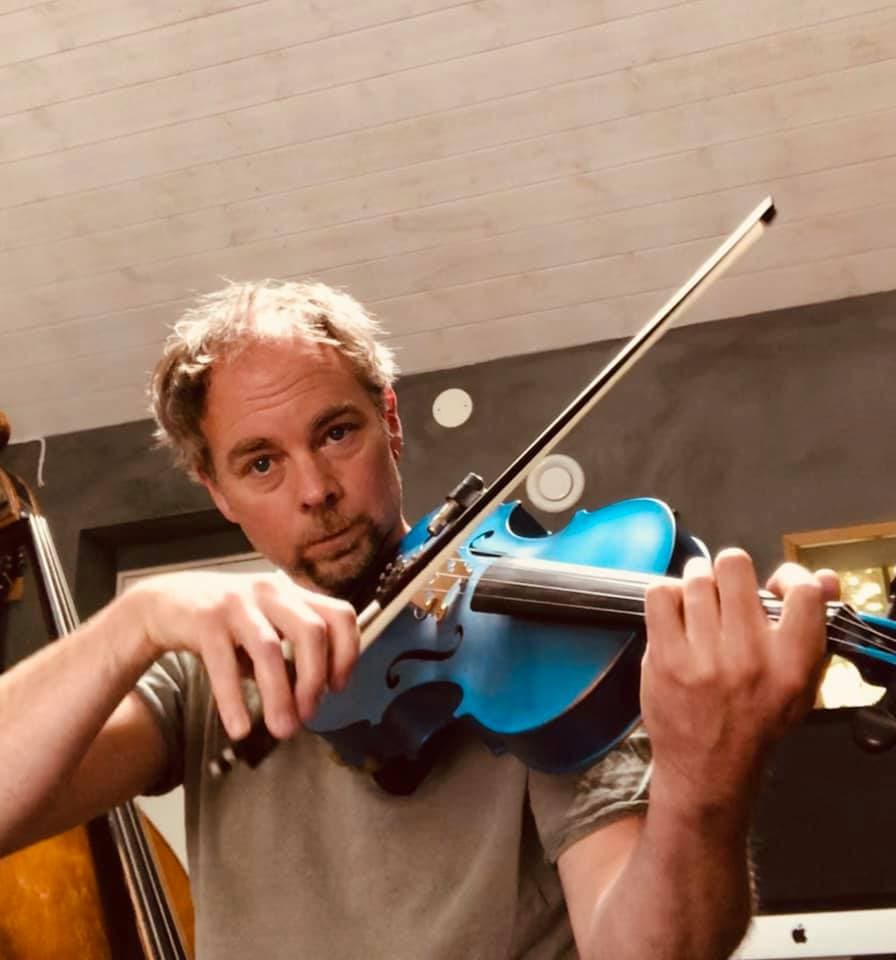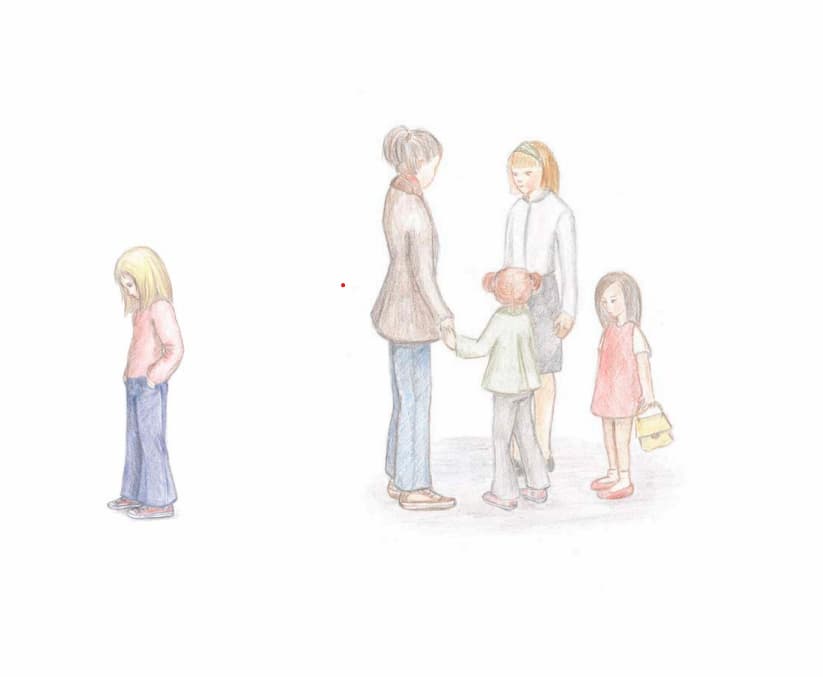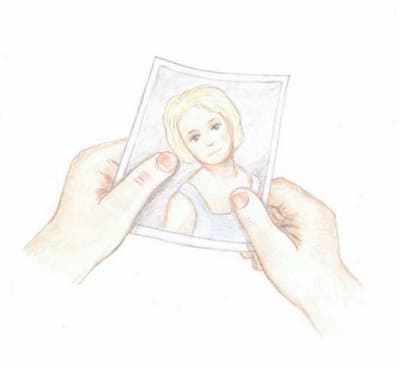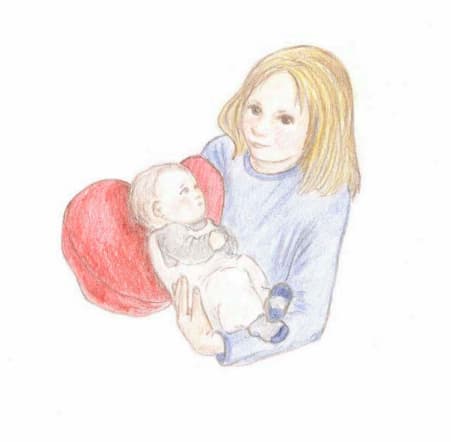Filip Runesson’s Hur länge ska hon vara död? (after W.A. Mozart’s Requiem in D Minor, K. 626)
Mozart and Death, but not the way you think about it. Swedish musician Filip Runesson took Mozart’s Requiem and rearranged it in klezmer style to use with a story about how children deal with death. The musical, entitled Hur länge ska hon vara död? (How long will she be dead?), faces a difficult topic with Mozart as support.

Joseph Lange: Mozart at the keyboard (unfinished), 1789 (Mozart-Museum, Mozarts Geburtshaus)

Filip Runesson
Using a case description from child psychologist Elisabeth Cleve, the work goes through the healing process of a girl whose mother died when she was very young.
The story opens with a story-like song in the klezmer style. The narrator comes in to give us the situation:
| Hej. Vi ska berätta om en flicka som heter Ronja. Hon är sju år och har inte någon mamma. Det gör att hon har en massa olika känslor inom sig – inte bara ledsna, utan också arga. Och ibland känner hon sig ensam, helt annorlunda än andra barn i skolan. | Hello. We are going to tell you about a girl called Ronja. She is seven years old and has no mother. This means that she has a lot of different emotions inside her – not only sad, but also angry. And sometimes she feels alone, completely different from other children at school. |
| Men Ronja är inte ensam, det finns fler som hon. Berättelsen skulle kunna handla om en pojke i stället, om en pojke som var … 9 år, eller till och med om en vuxen. För det kan hända alla att någon som är nära och viktig i ens liv dör och försvinner så att man aldrig kan träffas igen. | But Ronja is not alone, there are more like her. The story could be about a boy instead, about a boy who was … 9 years old, or even about an adult. Because it can happen to anyone that someone who is close and important in one’s life dies and disappears so that one can never meet again. |
| Vi ska berätta Ronjas historia med musik. Sånger kan ha väldigt olika sorters känslor i sig, precis som Ronja. De kan vara glada och leka, de kan längta eller ropa arga frågor. Och de kan låta som Ronja känner sig inuti hjärtat ibland, liksom trasigt och tomt. Men ni ska se att hennes hjärta kan bli helt och fint igen. | We will tell Ronja’s story with music. Songs can have very different kinds of emotions in them, just like Ronja. They can be happy and playful, they can yearn or shout angry questions. And they can sound like Ronja feels inside her heart sometimes, like broken and empty. But you will see that her heart can become whole and beautiful again. |
| RONJA | RONJA |
| Jag heter Ronja och har ingen mamma. Min mamma blev sjuk och dog när jag var två år. Nu är jag sju. (Räknar på fingrarna) … tre, fyr, fem, sex, sju … Det var fem år sen. Hur länge ska hon vara död? | My name is Ronja and I don’t have a mother. My mother got sick and died when I was two years old. Now I’m seven. (Counts on fingers) … three, four, five, six, seven … It was five years ago. How long will she be dead? |
Mozart, Olsson, Runesson: Hur länge ska hon vara död? (after W.A. Mozart’s Requiem in D Minor, K. 626) – Prologue: Zwei zwiebeln und Schweinerei (Tomas von Bromssen, narrator; Sanna Kallman, Ronja; Annika Jessen, clarinet; Filip Runesson, violin; Marcus Närvik, double bass; Johan Olsson, accordionist; Ensemble SYD; Daniel Hansson, cond.)
This leads directly into the Introitus from Mozart’s Requiem. Given the klezmer treatment, it is somehow lighter than the usual Requiem performance. I don’t mean any less serious because the text always carries a deep meaning, but perhaps more accessible to younger listeners. The movement closes with the Narrator telling us that Ronja has waited for 5 years for her mother’s return, ‘quietly and secretly, kind as a lamb’.
Mozart, Olsson, Runesson: Hur länge ska hon vara död? (after W.A. Mozart’s Requiem in D Minor, K. 626) – Prelude: Introitus (Annika Jessen, clarinet; Filip Runesson, violin; Marcus Närvik, double bass; Johan Olsson, accordionist; Ensemble SYD; Daniel Hansson, cond.)
The Agnus Dei has been rewritten to compare Ronja’s patience in waiting for her mother’s return to that of a lamb’s patience and kindness.
Mozart, Olsson, Runesson: Hur länge ska hon vara död?) (after W.A. Mozart’s Requiem in D Minor, K. 626) – Snäll som lammet (Tomas von Bromssen, narrator; Sanna Kallman, Ronja; Annika Jessen, clarinet; Filip Runesson, violin; Marcus Närvik, double bass; Johan Olsson, accordionist; Ensemble SYD; Daniel Hansson, cond.)
The movement closes with Ronja talking to a therapist about her anger at her mother’s non-return.
For the Kyrie, the question becomes:
| Hur kan vuxna lämna barn? | How can adults leave children? |
| Hur kan dom bara dö, hur kan dom? | How can they just die, how can they? |
Mozart, Olsson, Runesson: Hur länge ska hon vara död? (after W.A. Mozart’s Requiem in D Minor, K. 626) – Hur kan vuxna lämna barn (Tomas von Bromssen, narrator; Sanna Kallman, Ronja; Annika Jessen, clarinet; Filip Runesson, violin; Marcus Närvik, double bass; Johan Olsson, accordionist; Ensemble SYD; Daniel Hansson, cond.)
The movement closes with Ronja’s anger – smashing up things in the house and her father’s remonstrations against her behaviour.
The Rex Tremendae, normally the most heart-stopping section of Mozart’s Requiem, is mitigated by the klezmer rhythms and lighter speech. The world may be easily set back on its track, but the heart still knows no rest.
Mozart, Olsson, Runesson: Hur länge ska hon vara död? (after W.A. Mozart’s Requiem in D Minor, K. 626) – Lätt att röja, lätt att rasa (Tomas von Bromssen, narrator; Sanna Kallman, Ronja; Annika Jessen, clarinet; Filip Runesson, violin; Marcus Närvik, double bass; Johan Olsson, accordionist; Ensemble SYD; Daniel Hansson, cond.)
The movement closes with Ronja’s questions to the therapist – why did no one tell me her death was for ever? That’s really stupid. The Therapist agrees with her.

Varför har inte jag en / mamma som alla andra? (Why don’t I have a mom like everyone else (illustration by Charlotta Lindqvist)
The Dies irae becomes the statement that mother is dead forever, and in relief, Ronja says that this is good – now she can stop waiting.
| Död för alltid, som jag trodde | Dead forever, as I thought |
| Död för alltid, alltid borta | Dead forever, forever gone |
| som jag trodde, som jag anat | as I thought, as I suspected |
| död betyder hon är borta. | dead means she’s gone. |
| Varför kunde ingen sagt nåt, | Why couldn’t anyone say anything, |
| jag har inte slutat vänta, | I haven’t stopped waiting, |
| barn vill veta fast dom är ganska korta! | children want to know even though they are quite short! |
| Död för alltid, alltid borta | Dead forever, forever gone |
| kommer inte tillbaka | will not return |
| död betyder hon är borta. | dead means she’s gone. |
| Varför kunde ingen sagt nåt, | Why couldn’t anyone say anything, |
| jag har inte slutat vänta, | I haven’t stopped waiting, |
| alla visste, ingen sa nåt. | everyone knew, no one said anything. |
| Varken storasyster, mormor eller pappa | Neither older sister, grandmother or father |
| ingen sa nåt, ingen sa nåt. | nobody said anything, nobody said anything. |
| Varken storasyster, mormor eller pappa, | Neither big sister, grandmother nor father, |
| ingen sa vad alla visste | no one said what everyone knew |
| alla visste, ingen sa nåt. | everyone knew, no one said anything. |
| Slut på väntan, jag kan sluta vänta! | No more waiting, I can stop waiting! |
Despite Ronja’s seeming acceptance of the situation, when she returns to school, the teachers complain of her bad behaviour. Ronja is ashamed that her father has told the teachers that her mother is dead – and cannot explain why this has ruined everything.

Ronja and her heart / causing trouble at school, Sanna Källman as Ronja (Photo by Emil Malborg)
The father’s thoughts fill the Tuba miram: Jag som trodde allt var bra (I who thought everything was fine)….
Mozart, Olsson, Runesson: Hur länge ska hon vara död? (after W.A. Mozart’s Requiem in D Minor, K. 626) – Jag som trodde allt var bra (Tomas von Bromssen, narrator; Sanna Kallman, Ronja; Annika Jessen, clarinet; Filip Runesson, violin; Marcus Närvik, double bass; Johan Olsson, accordionist; Ensemble SYD; Daniel Hansson, cond.)
Others chime in with their thoughts: children are only sad for a few days, they have short memories, just let her get through it. Her father, however, knows that Ronja could use some help.
Ronja’s confusion is perfectly mirrored in the Confutatis.
Mozart, Olsson, Runesson: Hur länge ska hon vara död? (after W.A. Mozart’s Requiem in D Minor, K. 626) – Ronja retas, slåss och bråkar (Tomas von Bromssen, narrator; Sanna Kallman, Ronja; Annika Jessen, clarinet; Filip Runesson, violin; Marcus Närvik, double bass; Johan Olsson, accordionist; Ensemble SYD; Daniel Hansson, cond.)
Her father advocates that she look at her picture of her mother and think about what her mother left in her heart; she may find peace. The therapist helps Ronja find all the ways that she mirrors her mother: They like white flowers and the colour blue, they both have the same hair colour and the same blue eyes. The therapist tells Ronja to keep all these things in her heart, and one day, her heart will feel whole again.

Ronja’s photograph of her mother (illustration by Charlotta Lindqvist)
The final Requiem movement is the original Lacrimosa, here sung in Latin, closing off Ronja’s story.
Mozart, Olsson, Runesson: Hur länge ska hon vara död? (after W.A. Mozart’s Requiem in D Minor, K. 626) – Slutsång (Tomas von Bromssen, narrator; Sanna Kallman, Ronja; Annika Jessen, clarinet; Filip Runesson, violin; Marcus Närvik, double bass; Johan Olsson, accordionist; Ensemble SYD; Daniel Hansson, cond.)
But life goes on. Father remarries when Ronja is 8. She has her own bedroom and a new little sister. She has a watch now and doesn’t have to wait for things.

Ronja and her new little sister….and her heart (illustration by Charlotta Lindqvist)
Happiness can be found at the end of the path…with help to manage their grief. Adult patients speak of how they knew it was terrible to lose a parent, but what was worse was that no one ever spoke to them about the dead person. The child felt alone in their grief, and it made the loss all that more painful. Sometimes the really awful question, ‘How long will she be dead?’, cuts to the source of the child’s pain and misunderstanding.
An interesting solution to a deeply difficult problem – using Mozart’s great Requiem as the support for a story of death and resolution.
For more of the best in classical music, sign up for our E-Newsletter


